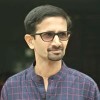Why Karnataka SIT can’t crack the Dharmasthala conspiracy
New Delhi: The moral torchbearers of Indian media have fallen silent. Progressive thinkers, writers, NGOs, and social activists have withdrawn into their shells. Even YouTube creators have hit the pause button on the series of contents on Dharmasthala Mass Burial Case. Why? Because the Special Investigation Team, set up by the Karnataka Congress government, has not delivered the outcome they anticipated. In Dharmasthala, no skeletons of young women were reportedly found; instead, the remains recovered by the SIT appeared to be of adult men. This has dealt them a body blow. On the contrary, the preliminary investigation and statements from those who helped craft the anti-Dharmasthala narrative, have shifted suspicion toward outside forces.
Meanwhile, a delegation of pontiffs representing various Hindu sub-sects met Union Home Minister Amit Shah, urging him to order an NIA probe. They argued that the Dharmasthala mass burial case was not an isolated incident but part of a larger conspiracy aimed at targeting Hindu places of worship.
On June 22, 2025, two Bengaluru-based lawyers announced that they got a client who was ready to disclose the locations of bodies of rape and murder victims he had personally buried in Dharmasthala between 1995 to 2014. On July 3, 2025, a former sanitation worker who claimed to have associated with the Dharmasthala temple, alleged that between 1995 and 2014, he had been forced to bury hundreds of bodies, including those of women showing signs of strangulation and sexual assault. He claimed he had been living in hiding due to threats to his life. Subsequently, he appeared before the Principal Civil Judge and JMFC Court and recorded a sworn statement under Section 183 of the Bharatiya Nyaya Samhita. Following this, a lady Sujatha Bhat publicly stated that her daughter, who went missing in 2003, might be among the victims. Based on a sworn statement made before the court, a case (No. 39/2025) was registered at Dharmasthala police station on July 4.
The ‘revelations’ quickly spread beyond Karnataka, drawing attention across India. International news outlets such as Gulf News, Al Jazeera, and the BBC carried the same storyline: an Indian temple town at the centre of hundreds of alleged murders, framing Hindu temple town of Dharmasthala as the epicentre of sexual violence and killings of women. Without being explicit, the news channels, websites and news programmes almost put the blame on Hindu belief. Indian television channels and YouTubers amplified the story with sensational coverage, some even using AI to stage dramatised recreations of kidnappings and murders.
Amid the uproar, Dr. Nagalakshmi Choudhary, Chairperson of the Karnataka State Women’s Commission, took note of media reports and wrote to the Dakshina Kannada Superintendent of Police. In her letter dated July 14 (Ref. 481/24-25), she directed the SP: “Submit a detailed report within seven days on the steps taken by the police in connection with cases of women and girls reportedly missing from Dharmasthala over the last 20 years. How many were traced? How many were cases of unnatural death, including rape and murder?”
On July 19, the State Home Department constituted a Special Investigation Team (SIT) headed by Director General of Police Dr. Pranab Mohanty. Its mandate was explicit: to investigate the cases flagged by the Women’s........






















 Toi Staff
Toi Staff Gideon Levy
Gideon Levy Tarik Cyril Amar
Tarik Cyril Amar Belen Fernandez
Belen Fernandez Andrew Silow-Carroll
Andrew Silow-Carroll Stefano Lusa
Stefano Lusa Rachel Marsden
Rachel Marsden Robert Sarner
Robert Sarner Constantin Von Hoffmeister
Constantin Von Hoffmeister
